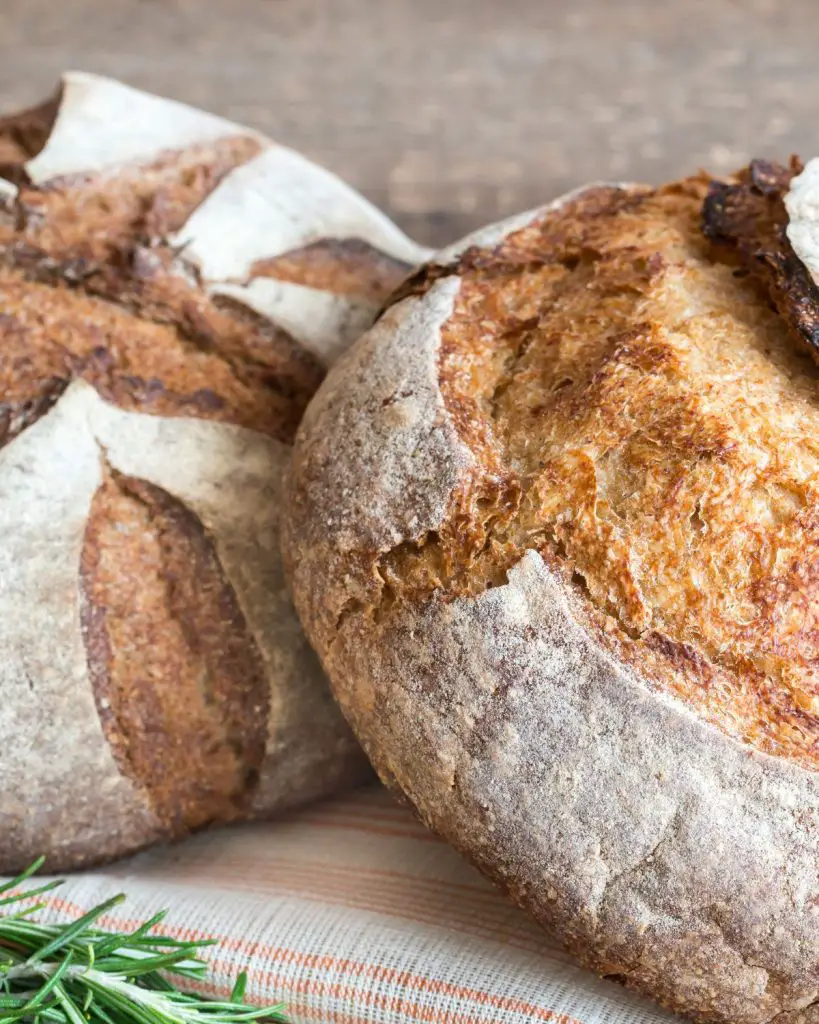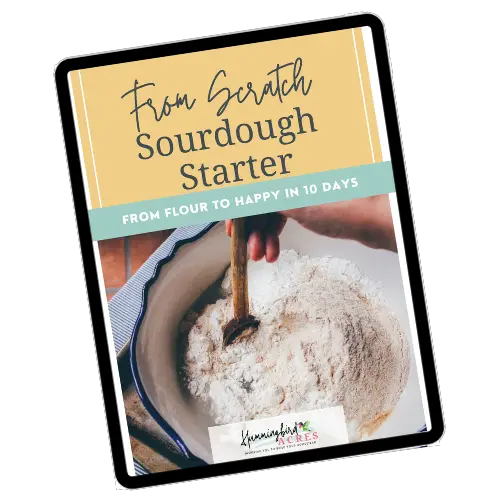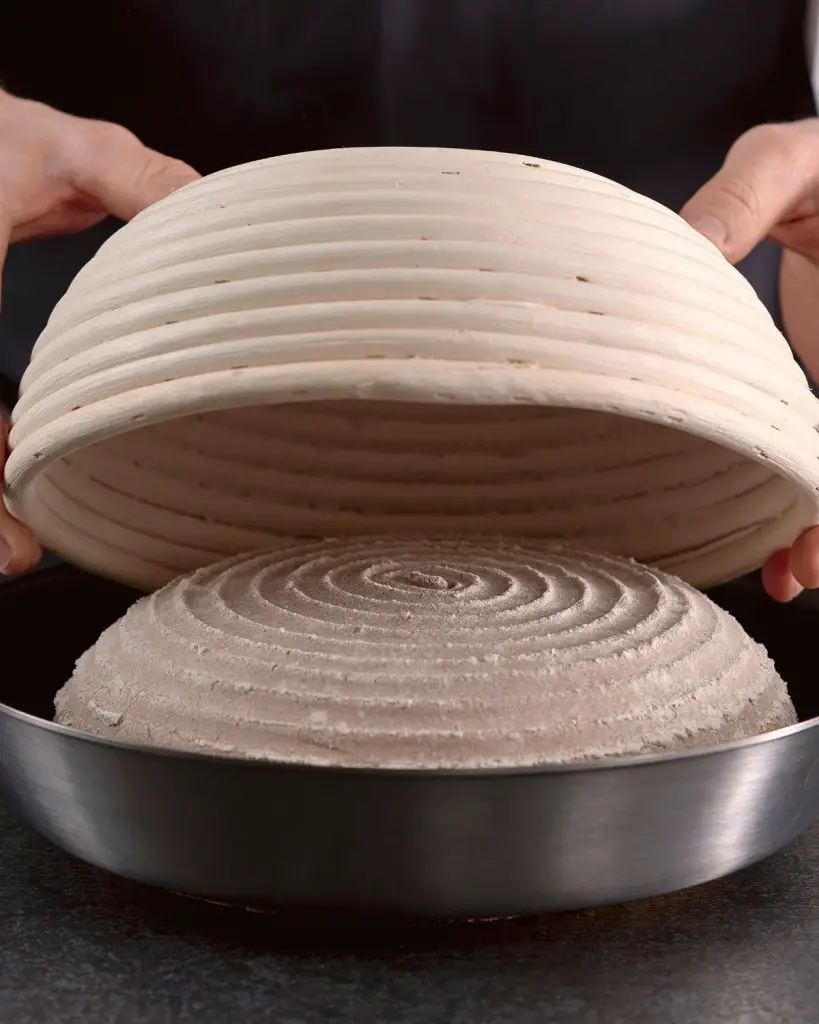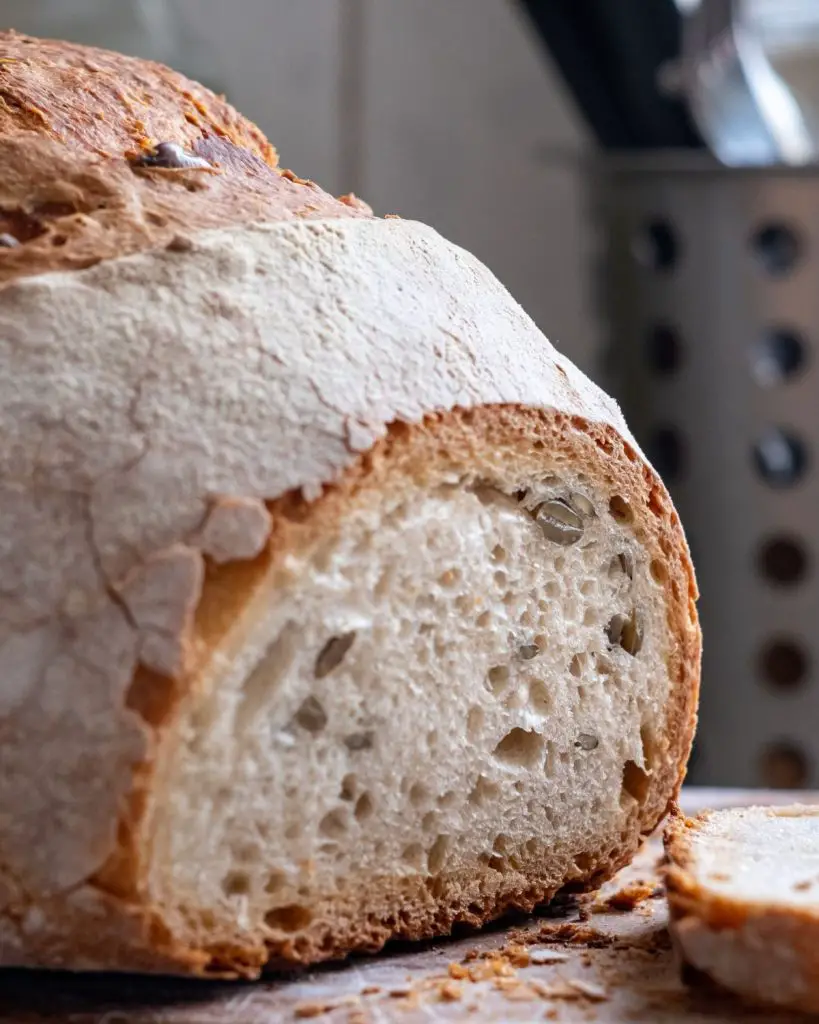The Role of Temperature in Sourdough Baking
When it comes to sourdough baking, temperature is a crucial factor that can make or break your bread. The right temperature can help your dough rise properly, develop a crispy crust, and have a moist and fluffy crumb. On the other hand, the wrong temperature can result in a dense, undercooked, or burnt loaf.
To start, it’s important to understand that sourdough baking involves several temperature-sensitive stages, including mixing the dough, bulk fermentation, shaping, proofing, and baking. Each stage requires a different temperature range and duration to achieve the desired outcome. For instance, during bulk fermentation, you want to keep your dough at a warm and stable temperature to encourage the growth of yeast and bacteria, while during shaping, you want to keep your dough cool and firm to prevent it from sticking or losing its shape.
Moreover, the temperature of your oven and the baking time can also affect the final result. A too-hot oven can cause your bread to burn or form a thick crust, while a too-cool oven can result in a pale, undercooked, or gummy loaf. Therefore, it’s crucial to use a thermometer to measure the internal temperature of your bread and ensure that it reaches the optimal range of 205°F (96°C) for a fully baked and safe loaf.
Disclosure: As an Amazon affiliate, I earn from qualifying purchases at no extra cost to you. My blog contains other affiliate links as well for your convenience. To learn more, you may read my Disclosure Policy. Thank you for supporting my blog!
The Importance of Temperature in Sourdough Baking
When it comes to baking sourdough bread, temperature plays a crucial role in determining the outcome of your loaf. From the fermentation process to the baking temperature, every step of sourdough baking requires careful attention to temperature. In this section, we will discuss how temperature affects sourdough baking and the ideal temperature range for sourdough baking.
How Temperature Affects Sourdough Baking
Temperature affects every stage of sourdough baking, from the initial mixing of ingredients to the final baking of the loaf. Here are a few ways temperature affects sourdough baking:
- Fermentation: The temperature of your dough during fermentation determines how quickly your dough will rise and how sour your bread will be. A warmer environment will speed up fermentation, while a cooler environment will slow it down.
- Proofing: Proofing is the final rise before baking. The ideal temperature for proofing sourdough bread is between 75°F to 78°F (24 to 25°C). If the temperature is too warm, the bread will overproof and collapse in the oven. If it’s too cold, the bread will not rise enough, resulting in a dense loaf.
- Baking: The baking temperature also plays a crucial role in the final outcome of your bread. The ideal temperature for sourdough bread is between 190°C to 220°C (375°F to 425°F). Baking at a lower temperature will result in a pale, undercooked loaf, while baking at a higher temperature will result in a burnt crust and undercooked interior.

Ideal Temperature Range for Sourdough Baking
The ideal temperature range for sourdough baking depends on the stage of the baking process. Here’s a breakdown of the ideal temperature range for each stage of sourdough baking:
- Mixing: The ideal temperature for mixing sourdough is between 70°F to 75°F (21°C to 24°C). This temperature range allows the flour to absorb the water and develop gluten properly.
- Fermentation: The ideal temperature range for sourdough fermentation is between 75°F to 82°F (24°C to 28°C). This temperature range allows the dough to ferment properly and develop a complex flavor.
- Proofing: The ideal temperature range for proofing sourdough is between 75°F to 78°F (24 to 25°C). This temperature range allows the bread to rise properly without overproofing.
- Baking: The ideal temperature range for baking sourdough is between 190°C to 220°C (375°F to 425°F). This temperature range allows the bread to bake evenly and develop a crispy crust.
In conclusion, temperature is a crucial factor in sourdough baking. From the mixing of ingredients to the final baking of the loaf, every step requires careful attention to temperature. By following the ideal temperature range for each stage of sourdough baking, you can achieve a perfectly baked loaf with a complex flavor and crispy crust.
Controlling Temperature in Sourdough Baking
If you want to bake the perfect sourdough bread, controlling the temperature is crucial. The temperature affects the fermentation process, which in turn affects the rise and texture of the bread. In this section, we’ll discuss three methods for controlling temperature during sourdough baking.

Get our FREE Guide
From Scratch Sourdough Starter
Are you frustrated by failed attempts at creating a perfect starter? Imagine effortlessly baking crusty, artisanal loaves that rival your favorite bakery, without the stress and disappointment. Introducing Fail Proof Sourdough Starter – the simple, proven solution to your sourdough struggles.
Enter your name & email so we can send your our FREE Guide.
Using a Proofing Box
A proofing box is a temperature-controlled environment that allows you to control the temperature and humidity of your dough during the fermentation process. You can purchase a proofing box, or you can make one yourself using a plastic bin, a thermometer, and a heating pad.
To use a proofing box, place your dough inside the box and set the temperature to the desired level. The ideal temperature for sourdough fermentation is between 75°F and 82°F (25°C and 28°C). Leave the dough in the proofing box for the recommended time, and then move on to the next step in the baking process.
Using a Dutch Oven
A Dutch oven is a great tool for controlling the temperature during sourdough baking. The thick walls of the Dutch oven retain heat and moisture, which helps create a crusty, chewy bread. To use a Dutch oven, preheat it in the oven for at least 30 minutes before baking your bread.
Once the Dutch oven is hot, carefully remove it from the oven and place your dough inside. Cover the Dutch oven with the lid and return it to the oven. The closed environment of the Dutch oven helps trap steam, which creates a crispy crust. Bake the bread according to the recipe instructions.
Here is a link to our favorite Dutch Oven, here.

Using a Bread Cloche
A bread cloche is a clay or ceramic dome-shaped baking dish that creates a steamy environment for your bread. The cloche traps moisture, which helps the bread rise and creates a crispy crust. To use a bread cloche, preheat it in the oven for at least 30 minutes before baking your bread.
Once the cloche is hot, carefully remove it from the oven and place your dough inside. Cover the cloche with the lid and return it to the oven. The steam created by the cloche helps create a crispy crust. Bake the bread according to the recipe instructions.
Remember, controlling the temperature during sourdough baking is crucial for creating the perfect loaf of bread. Use a proofing box, Dutch oven, or bread cloche to control the temperature and humidity of your dough and achieve the best results.
Check out the Emile Henry Bread Cloche.
Common Temperature-related Issues in Sourdough Baking
When it comes to sourdough baking, temperature plays a crucial role in the fermentation process. If the temperature is too high or too low, it can result in several issues that can affect the quality of your bread. In this section, we will discuss some common temperature-related issues in sourdough baking.
Over-proofing
Over-proofing occurs when the dough is left to ferment for too long. This can happen when the temperature is too warm, and the dough ferments too quickly. Over-proofed dough will be sticky, flat, and lacking in structure. The crust may also be pale and thin, and the crumb may be dense.
To avoid over-proofing, it’s essential to monitor the dough closely and adjust the temperature accordingly. If the dough is fermenting too quickly, you can slow it down by placing it in a cooler area or reducing the temperature.

Under-proofing
Under-proofing occurs when the dough is not allowed to ferment for long enough. This can happen when the temperature is too cold, and the dough ferments too slowly. Under-proofed dough will be dense, heavy, and lacking in flavor. The crust may also be thick and hard, and the crumb may be tight.
To avoid under-proofing, it’s important to give the dough enough time to ferment. If the dough is fermenting too slowly, you can speed it up by placing it in a warmer area or increasing the temperature.
Crust and Crumb Issues
Temperature can also affect the crust and crumb of your bread. If the temperature is too high, the crust may be too dark or burnt, and the crumb may be dry. If the temperature is too low, the crust may be pale and thin, and the crumb may be dense.
To achieve the perfect crust and crumb, it’s important to find the right temperature for your dough. A high temperature will cause your dough to ferment more quickly and produce less acidity. A lower temperature will slow down the fermentation and result in more acidity. You can experiment with different temperatures to find the perfect balance for your bread.
In conclusion, temperature is a crucial factor in sourdough baking. By understanding the common temperature-related issues and how to avoid them, you can achieve the perfect loaf every time. Keep an eye on your dough, adjust the temperature as needed, and experiment to find the perfect balance for your bread.

Conclusion
In conclusion, temperature is a critical factor in sourdough baking. It can affect the rise, flavor, and texture of your bread. By understanding the optimal temperatures for each stage of the sourdough baking process, you can achieve the best results.
When mixing the ingredients, aim for a final dough temperature between 75-80°F (24-27°C). During bulk fermentation, keep the dough at around 78°F (26°C) to encourage the growth of yeast and bacteria. Proofing should occur at a temperature between 75-82°F (24-28°C) for best results.
When it comes to baking, preheat your oven to 450-500°F (230-260°C) and use a baking vessel such as a Dutch oven or cast iron pot to trap steam and create a crispy crust. Bake your bread at 450°F (230°C) for the first 15 minutes, then lower the temperature to 400°F (205°C) for the remaining time.
Remember that these are general guidelines, and you may need to adjust the temperatures based on your specific environment and ingredients. Use your senses and judgment to determine when your bread is ready.
By paying attention to temperature and following these tips, you can create delicious, artisanal sourdough bread at home.
You may also enjoy these related articles:
- Sourdough Glossary
- How to Get the BEST Sourdough Oven Spring
- Sourdough Starter: How to Create and Maintain a Healthy Culture
Did you enjoy this article? Want to hear more? Stay in touch! Sign up below to receive weekly tips and inspiration for your homestead.

